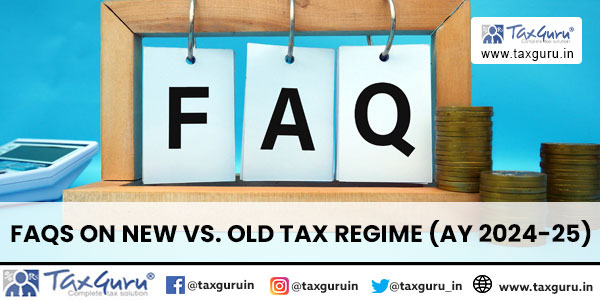Case Law Details
1. Briefly stated the assessee, being resident individual engaged in development of land by construction of residential/ commercial premises, was assessed for impugned AY u/s 143(3) at Rs. 28,20,17,740/- after certain adjustments/ dis allowances as against returned income of Rs. 18,95,66,240/-. One of the dis allowances pertained to dis allowances u/s. 40(a)(ia) amounting to Rs. 1,81,29,209 for non- deduction of tax at source on certain contractual payments. Another adjustment was related with assessee’s claim towards set-off of unabsorbed brought forward business losses for AY 2001-02 and 2003-04 amounting to Rs.5,35,96,798/- and Rs. 2,07,79,491/- respectively from business income which, during assessment proceedings, was found unavailable to the assessee. Subsequently, dis allowance u/s 40(a)(ia) was deleted by Mumbai Tribunal in ITA No. 1643/Mum/2011 order dated 06/02/2015. The assessee withdrew its claim with respect to brought forward business losses for AY 2001- 02 & 2003- 04 on the ground that it was inadvertently claimed and due to mistake on the part of the assessee.
2. In the meanwhile, penalty proceedings were initiated for both these adjustment/ dis allowance in quantum order and consequently, the assessee was issued notice u/s 274 read with section 271(1)(c) dated 30/12/2008. Finally, the assessee was saddled with impugned penalty on both accounts by AO vide its order dated 30/06/2009 by placing reliance on Apex court judgment in CIT Vs. Dharmendra Textile Processor (306 ITR 277) wherein it was held that levy of penalty is a civil liability and willful concealment is not an essential ingredient for attracting civil liability. Reliance was also placed on Apex court decision in the case of Dilip N. Shroff Vs. JCIT (291 ITR 519).
3. Aggrieved, the assessee contested the penalty without any success before Ld. CIT(A) vide impugned order dated 15/12/2010 wherein Ld. CIT(A) confirmed the penalty by noting that the assessee made a false claim and the assessee failed to establish that the mistake in the return was inadvertent and by making the wrong claim, the assessee has tried to reduce the tax liability. Aggrieved, the assessee is in appeal before us and assailed the penalty on legal grounds as well on merits of the case.
4. The Ld. Counsel for Assessee [AR], while drawing our attention to documents placed in the paper book, first of all contended that since the assessee’s quantum appeal qua dis allowance u/s 40(a)(ia) has been allowed by the Tribunal, penalty to that extent do not survive. Upon perusal of the documents, we concur with the same and at the outset hold that since quantum dis allowance has been deleted by the Tribunal, penalty in respect thereof do not survive.
5. Proceeding further, the Ld. AR stated that initially the business losses for AY 2001- 01 stood at Rs. 535.36 Lacs, however, the same got reduced to Rs. 64.50 Lacs after giving effect to appellate orders. However, the set-off of business losses for AY 2001- 02 & 2003- 04 was claimed at wrong figures due to inadvertent error and the assessee, upon being pointed out, accepted the same and paid necessary taxes thereupon without filing any further appeal. Since, the claim was due to inadvertent oversight /error, the penalty against the same was not justified particularly keeping in view the conduct of the assessee. In support, the documents pertaining to AY 2001-02 and appellate orders have been placed in the paper book. Reliance has been placed on the judgment of Apex Court in Price Water house Coopers Pvt. Ltd. Vs. CIT [CA No. 6924 of 2012 25/09/2012] to contend that inadvertent error do not entail levy of penalty.
6. Proceeding further, the Ld. AR contended that there was clear disclosure of all material facts in the computation and return of income and hence, mere making of claim which is not found acceptable by the revenue, do not entail penalty as per the decision of Apex Court in CIT Vs. Reliance Petro products Pvt. Ltd. [322 ITR 158].
7. Our attention is further drawn to a critical fact that the Ld. AO did not fulfill the jurisdictional requirement of arriving at a clear finding and satisfaction for the levy of penalty in the quantum order as the AO, in the body of assessment order, stated that ‘since it appears that the assessee has furnished inaccurate particulars of income within the meaning of Section 271(1)(C) and has also concealed the particulars of income within the meaning of Explanation 1 to the said section ’ Whereas in contrast, show cause notice u/s 274 read with section 271(1)(C) mentions the charges as ‘have concealed the particulars of your income or furnished inaccurate particulars of such income.’ Finally, the penalty has been imposed by Ld. AO in the penalty order by stating that ‘in view of the above facts, I am satisfied that the assessee has filed inaccurate particulars of Income and hence concealed the income.’ Therefore, the same reflects non-application of mind on the part of AO and the AO himself was not sure about the limb / exact charge for which the assessee was being penalized. Therefore, the penalty order stands vitiated for want of principles of natural justice and hence, need to be quashed. Reliance has been placed on the judgment of Apex Court in Dilip N. Shroff Vs. JCIT (291 ITR 519) wherein the Supreme Court observed that the concealment of income and furnishing of inaccurate particulars of income are different. The Hon’ble Court further held that non-striking off of the relevant portions of standard show-cause notice reflects non-application of mind by AO and hence vitiates the penalty. Our attention is further drawn to the fact that the ratio of this case was very much relevant and valid despite the judgment of Apex Court in the case of CIT Vs. Dharmendra Textile Processor (306 ITR 277) in view of another judgment of Supreme Court in CIT Vs. Reliance Petro products Pvt. Ltd. [322 ITR 158] wherein it was observed that reasoning given in the case of Dilip N.Shroff could not be faulted except to the extent of observations regarding necessity of mens-rea for the purpose of Section 271(1 )(C). Reliance is also placed on the judgment of Hon’ble Karnataka High Court in CIT Vs. Manjunatha Cotton & Ginning Factory [2013 359 ITR 565] which was later followed by the same court in CIT Vs. SSA’s Emerald Meadows [ITA NO. 380 OF 2015 23/11/2015] against which special leave petition [SLP] filed by the revenue before Apex Court in CC No.11485/2016 order dated 05/08/2016 was dismissed by the Hon’ble court, finding no merits in the case. Further, Hon’ble Bombay High Court has followed the ratio of same judgment in CIT Vs. Shri Samson Perinchery [ITA No. 1154 of 2014 order dated 05/01/2017] and further Tribunal, in catena of judgment and more particularly in Wadhwa Estate & Developers Vs. ACIT [ITA N0. 2158/Mum/2016 dated 24/02/2017] has taken the same view following the aforesaid judgments. Therefore, the penalty, being devoid of jurisdiction, was liable to be quashed.
8. Per contra, the Ld. Departmental representative placed reliance on Section 292B to contend that mere defect in the notice do not vitiates the penalty proceedings and no prejudice was caused to the assessee by non-striking off of relevant words. The assessee very well knew the grounds for which he was being penalized and the Ld. AO with due application of mind initiated penalty proceedings in quantum assessment and levied the same after providing ample opportunity to the assessee to contest the same. Moreover, the assessee actively contested the penalty proceedings before AO and therefore, the legal grounds, being only hyper-technical in nature, do not carry much weight. The assessee, despite being fully aware of his claims, made a wrong claim and therefore, rightly saddled with the impugned penalties. Reliance has been placed on the judgment of Hon’ble Bombay High Court in CIT Vs. Smt. Kaushalya [216 ITR 660 14/01/1992].
9. We have heard the rival contentions and perused the relevant material on record including cited case laws. Since legal grounds goes to the roots of the matter, we take up the same first. A perusal of the quantum assessment order reveals that the penalty has been initiated for furnishing of inaccurate particulars of income and concealment of particulars of income which, as per settled legal propositions, are different connotations and carry different meaning and two separate limbs. The same also becomes clear from the language of show-cause notice which states that the assessee have concealed the particulars of income or furnished inaccurate particulars of income. Finally, the penalty has been levied for filing of inaccurate particulars of income and hence concealed particulars of income which shows inconsistent thinking on the part of AO. Undisputedly, the AO was required to specify the exact charge for which the assessee was being penalized which he has failed to do so and the same has resulted into taking away assessee’s valuable right of contesting the same and thereby violates the principles of natural justice. Our view is fortified by the cited judicial pronouncements of superior court and even the SLP filed by the revenue in CIT Vs. SSA’s Emerald Meadows [supra] has been dismissed by the Apex Court, being devoid of any merits. Even in the case of CIT Vs. Smt. Kaushalya [supra], the Hon’ble jurisdictional High Court observed that the notice issued under Section 274 must reveal application of mind by the Assessing Officer and the assessee must be aware of the exact charge on which he had to file his explanation. It was further observed that vagueness and ambiguity in the notice deprives the assessee of reasonable opportunity to contest the same. Therefore, viewed in the light of principles laid down in the judicial precedents discussed herein above, we are inclined to conclude that the penalty proceedings stood vitiated for want of principles of natural justice and hence liable to be quashed. Accordingly, we delete the same.























excellent discussion. Kindly cite me more cases of applicability of sec. 292B in defective penalty cases.
my mail id is :
slbansal_2002@yahoo.com